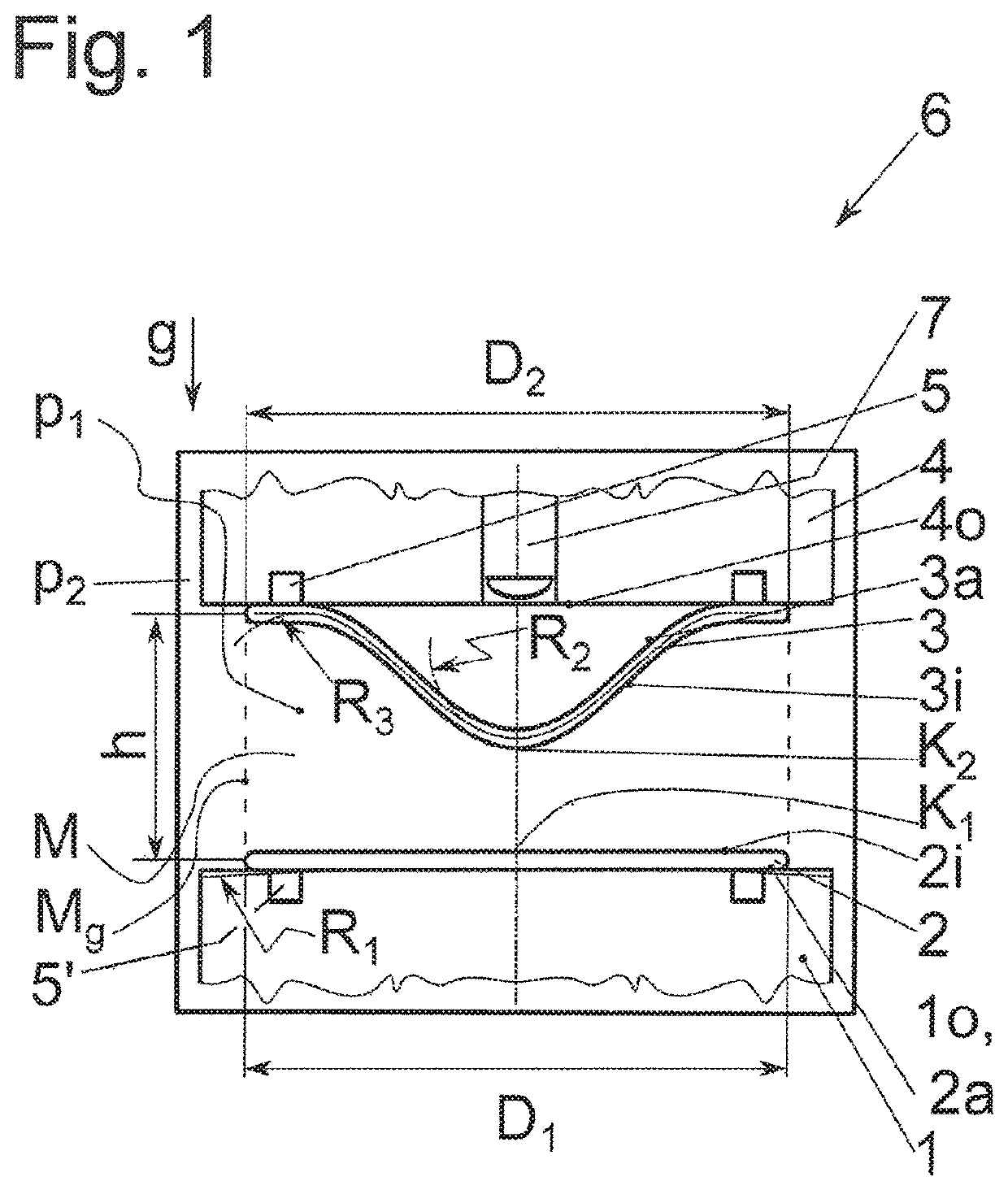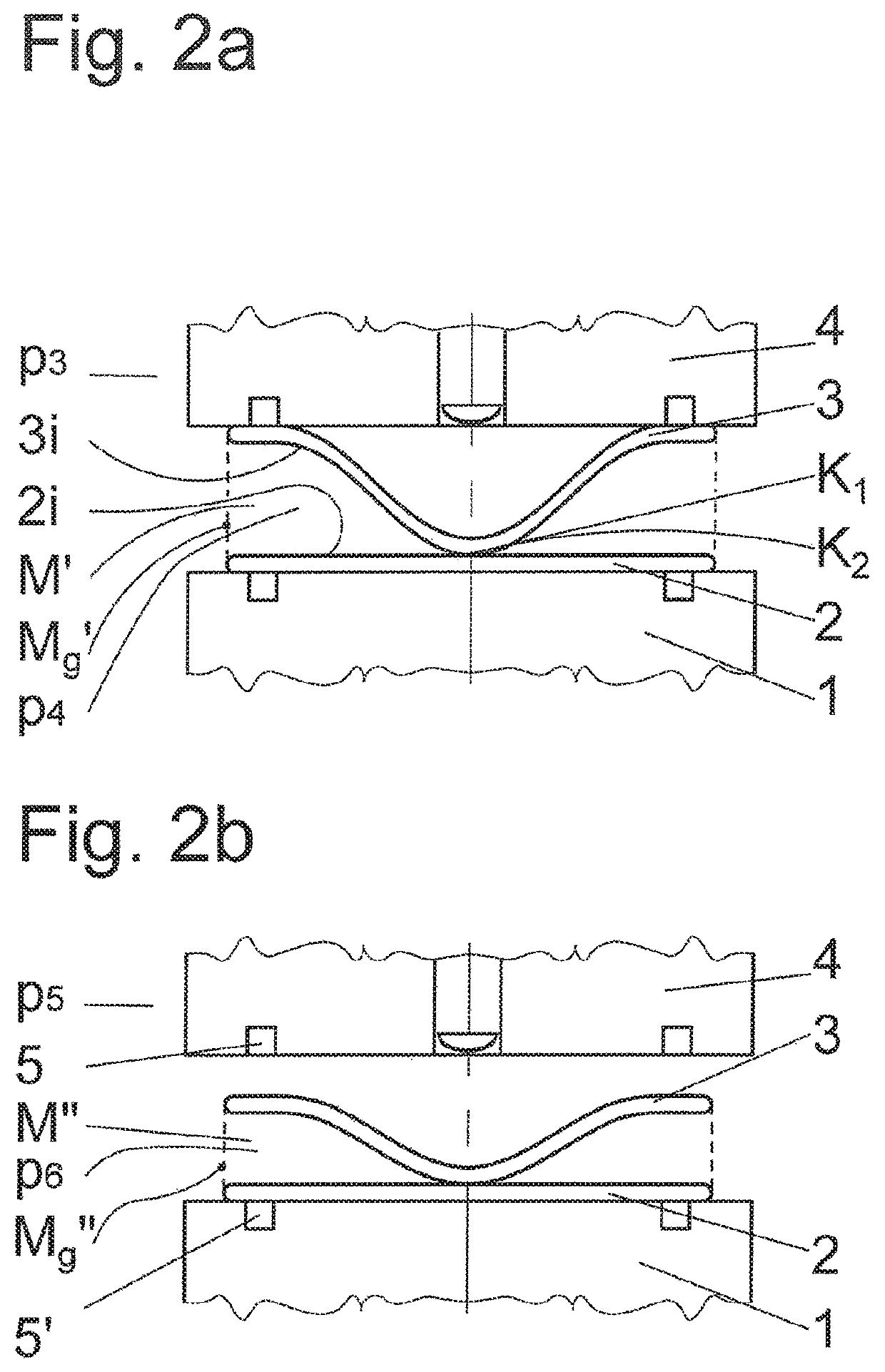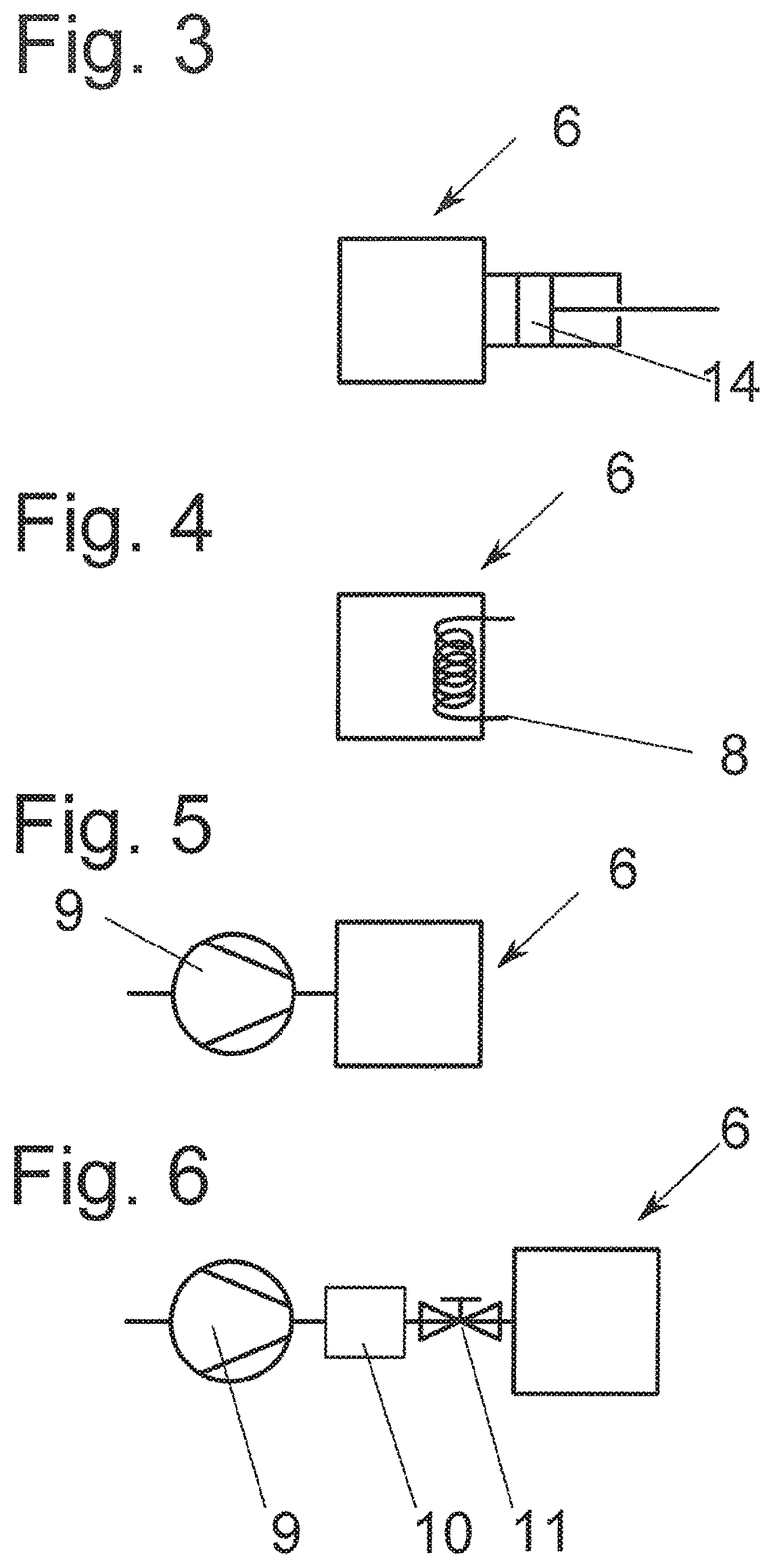Method and device for bonding of substrates
a technology of substrate bonding and substrate, which is applied in the direction of microstructural devices, coatings, microstructured technology, etc., can solve the problems of no longer being able to increase the lateral density of functional units, the alignment accuracy of functional units cannot be increased at all, and the physical and technological limitations cannot be overcome. achieve the effect of increasing the bonding quality, in particular the bonding accuracy, especially at the edge of the substra
- Summary
- Abstract
- Description
- Claims
- Application Information
AI Technical Summary
Benefits of technology
Problems solved by technology
Method used
Image
Examples
first embodiment
[0164]FIG. 3 represents a schematic block diagram of a bonding chamber 6, wherein the in particular dynamic and constant increase in the chamber pressure takes place by means of a change in the bonding chamber volume, in particular by means of piston 14, so that the number of particles in bonding chamber 6 during the bonding process remains constant with changing pressure in an observation period, in particular between the end positions (not shown) of the piston. When there is a change in the volume of the sealed bonding chamber, no gas particles accordingly enter into the sealed system of the bonding chamber volume; likewise, no particles are removed. The particle number thus remains constant and the gas laws for ideal gases can thus be applied. In the embodiment, a targeted supply of the generated excess pressure in the case of a compression is to be conveyed via, for example, a nozzle system, described in FIG. 2, to the appropriate point.
second embodiment
[0165]FIG. 4 is a schematic block diagram of a bonding chamber 6. The inventive increase in the pressure takes place via the change, in particular the increase, in the temperature by suitable heating means 8. The number of particles in bonding chamber 6 during the bonding process can remain constant with a sealed system. With a temperature change of the sealed bonding chamber, no gas particles accordingly enter into the sealed system of the bonding chamber volume; likewise, no particles are removed. The particle number thus remains constant and the gas laws for ideal gases can thus be applied. In the embodiment, a targeted supply of the generated excess pressure (generated by a thermal energy supply) is to be conveyed via, for example, a nozzle system, described in FIG. 2, to the appropriate point.
third embodiment
[0166]FIG. 5 is a schematic block diagram of a bonding chamber 6 according to the invention, wherein the in particular dynamic and constant increase in the chamber pressure can take place by suitable compressor units 9, pumps. Particle-free air, nitrogen, argon, helium, carbon dioxide or other inert gases can be pumped at high pressure into the bonding chamber. As discussed in FIG. 2, and not shown here, a targeted supply of the generated excess pressure can influence the bonding wave, according to the invention, via a suitable nozzle system.
[0167]FIG. 6 represents an extension of the third embodiment of a bonding chamber 6 represented in FIG. 5. Here, an excess pressure is generated by means of a compressor unit 9, which fills a storage unit 10, in particular a pressure vessel. By means of suitable valves 11, the excess pressure can also be conveyed, as disclosed in FIG. 2a, 2b, to the appropriate points of spatial section interface Mg′ or Mg″ and the bonding wave can be influenced...
PUM
| Property | Measurement | Unit |
|---|---|---|
| speed | aaaaa | aaaaa |
| speed | aaaaa | aaaaa |
| speed | aaaaa | aaaaa |
Abstract
Description
Claims
Application Information
 Login to View More
Login to View More - R&D
- Intellectual Property
- Life Sciences
- Materials
- Tech Scout
- Unparalleled Data Quality
- Higher Quality Content
- 60% Fewer Hallucinations
Browse by: Latest US Patents, China's latest patents, Technical Efficacy Thesaurus, Application Domain, Technology Topic, Popular Technical Reports.
© 2025 PatSnap. All rights reserved.Legal|Privacy policy|Modern Slavery Act Transparency Statement|Sitemap|About US| Contact US: help@patsnap.com



